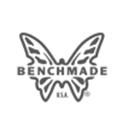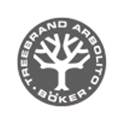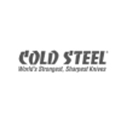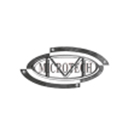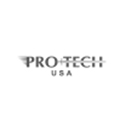A Quick Hogue Deka Review (Wharncliffe, MagnaCut Blade)
15th Jun 2023
One of the great things about the Hogue Deka is that it is available in a few different configurations.
One of the best of these is the Wharnie configuration which boasts a MagnaCut steel blade.
Let’s break down this gem from the Hogue catalog.
About MagnaCut Steel
Regardless of this Hogue Knife’s features and other attributes, it’s worth the price for the quality of the blade steel alone.
MagnaCut blade steel, developed by CPM, or Crucible Particle Metallurgies, contains 1.15% carbon, 10.7% chromium, 4% vanadium, 2% molybdenum and niobium, and .2% nitrogen.
Each of these elements plays a crucial role in the chemical advantages of this alloy.
At over 1% carbon, MagnaCut steel can take and hold a wickedly sharp edge with the right set of stones.
Part of the secret here is actually the inclusion of nitrogen at .2%. Normally, nitrogen is considered an undesirable inclusion in steel, as it makes it hard.
But it makes it too hard, brittle, in fact, so most metallurgists and machinists look down on steels that contain too much nitrogen.
But here, it makes the steel harder, so it can hold an edge longer, but it’s not present in a significant enough amount to make the blade more brittle than it has any right to be.
This steel also offers excellent corrosion resistance thanks to its hefty helping of chromium, at more than 10%. Yet all the same, there isn’t enough chromium to make the steel too soft.
The last three elements all make the steel tougher, more durable, and more wear resistant, especially vanadium.
All three of these elements make steel much tougher, less brittle, and less likely to chip, crack or shatter. Vanadium also forms carbides with carbon which, when distributed throughout the alloy, make it harder and give it better edge retention.
So MagnaCut, like S35VN and 154CM, absolutely deserves the moniker of “super steel,” offering the holy trinity of steel attributes: hardness/edge retention, corrosion resistance, and general durability (toughness).
And, on top of that, it’s finished with a Cerakote that effectively eliminates the risk of corrosion.
About the Wharncliffe Blade Profile
The next most significant thing about this knife is the blade profile. The Classic Hogue Deka is made with a clip-point blade - or at least a modified clip-point.
This makes the knife excellent for piercing, puncturing, and carving, and it makes the knife look cool, but it also results in a blade with a somewhat fragile tip.
This variant of the Hogue Deka boasts a Wharncliffe style profile which might equally be called a sheepsfoot profile.
The sheepsfoot style blade creates a sharp drop from the steel blade stock of the spine towards the tip, resulting in a design that has most of the same relative benefits as a clip point or straight back, without the added fragility.
Sheepsfoot style blades are not quite as good at piercing or fine detail work, but they are much tougher and less likely to break or snap, even if you force it.
Still, the blade profile is highly suitable for piercing and carving and in fact in some cases better for carving than clip points.
Given the fact that you can use a Wharnie or a sheepsfoot or pretty much everything you can use a clip point for with less risk of breakage, it’s a safe gamble that if you get one of these you’ll find this profile growing on you.
A Differential Grind
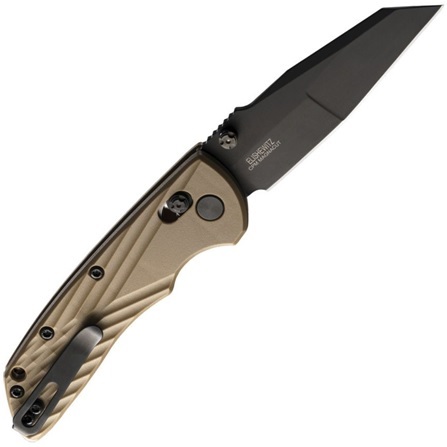
Another cool thing about this Hogue Deka is that the blade features a differential grind, with two distinct sections, towards the tip, and near the handle.
Not all users will prefer this, but if you use your knife for very diverse and different applications, the differential grind is sort of like a combi-edge with a partial serration.
For instance, you can keep one section very finely honed and the other a little more obliquely honed, and use one for harder, rougher tasks and the other for fine detail work.
You don’t need to take advantage of it but it’s a nice feature.
Rock-Solid Handle Scales
Another thing to love about this Hogue Deka is something it shares with its cousin: solid, super-grippy synthetic polymer scales.
Available in several colors, these polymer scales offer a sure grip in all conditions and require less maintenance than natural scales (like leather, bone or wood).
Also, while not quite as tough as steel or titanium scales, they are corrosion-proof and safer to use in extremely cold temperatures.
The “Best” Folding Knife Lock Type: An Able Lock (An AXIS-Lock in Disguise)
Last but not least, we have to say a few things about the Hogue Deka’s lock type.
Hogue calls this an Able Lock, probably to differentiate (or protect) itself from Benchmade, which calls it an AXIS lock.
But one way or the other, these locks are AXIS locks in everything but name.
They are extremely strong and easy to use, and easy to engage and disengage with one hand (thanks in part to the Deka’s dual thumb studs). They’re reliable in all conditions, about as failure proof as a folding knife lock type can be, and very safe.
Not only are they fidget friendly, but an AXIS-style lock can easily be closed without putting your fingers in the way of the blade, making them safer than liner and frame locks.
Also, on that subject, they also are both right and left-friendly. AXIS-style Locks like Hogue’s Able Lock do not favor either right or left-handed users, like frame and liner locks do.
…And It’s Made in the United States
One more thing to love about the Hogue Deka - it’s made in the United States.
And, if you get one here, you’re probably eligible for free shipping.
Check out our entire Hogue catalog via the previous link before you pull the trigger. You might find one you like better than the Deka with a Wharnie blade.
Or a couple. Don’t limit yourself to one Hogue Knife. It’s called an “EDC Rotation” for a reason.


